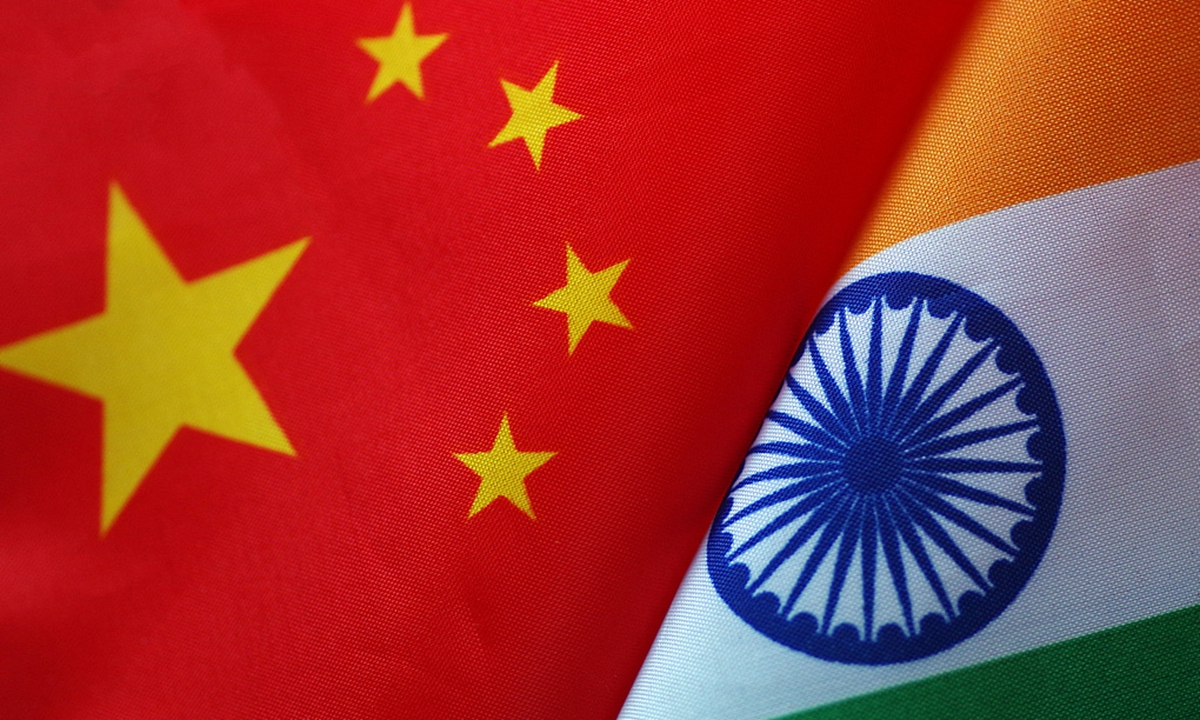
Photo: VCG
China and India have reached resolutions on issues concerning the border area. It's a big step toward cooling off the four-year border tensions. But to understand why this is such a big deal, we need to zoom out and examine how the global and Asia-Pacific geopolitical landscape has been shifting over the past four years.
Six years ago, I participated in an amazing exchange program organized by the Global Times and several Indian media outlets. We flew from Baotou, a steel hub in Inner Mongolia, to Guizhou, a province in Southwest China. Now, Baotou itself was no megalopolis - less than 3 million people called it home back then. But let me tell you, the Baotou Steel and Iron Company name carried some serious weight in China.
I gave my Indian colleague a quick history review. Baotou Steel started with just one furnace back in the 1950s. Fast forward to today, and they're cranking out hundreds of different types of steel. They went from making mud pies to baking a gourmet buffet.
I explained how China's economic boom over the past 40-plus years had led to the construction of numerous massive transport hubs such as Baotou Airport. Baotou Steel played a starring role in that narrative. They rode the wave of China's unprecedented rise and became an indispensable cog in the country's industrial machine.
During our exchange, we couldn't stop talking about the golden opportunities for growth in both China and India, and how the two countries could capitalize on them. Of course, we were also excited about the potential for collaboration between our countries. When we arrived in Guiyang, capital of Guizhou, we realized that China and India could form a dynamic duo in areas like software, cloud storage and big data. The two countries were already cooking up some exciting joint projects in these fields.
But then 2020 rolled around, and old injuries resurfaced. The border clash put a major spanner in the works. It was as if someone had poured cold water on our budding friendship, which really dampened China-India economic ties.
Since then, the bilateral relationship has been complicated. Geopolitical shifts have thrown us for a loop at every turn.
The US decided to paint China as its arch-rival, which led to its "China Plus One" strategy that aims to diversify manufacturing and source away from China to other countries. Suddenly, everyone looked at India as their backup plan, attempting to drive a wedge between China and India.
On the surface, it seemed like India had hit the jackpot. But here's the reality check: India can't just snap its fingers and transform into a manufacturing powerhouse overnight. China is still India's go-to source for goods and industrial products.
Plus, India isn't exactly thrilled about being a pawn in America's grand chess game. It understands that playing by US rules won't let it become the independent powerhouse it aspires to be.
What's more, if the US keeps pushing its agenda, the whole region could end up divided and at each other's throats, which would be detrimental to India's growth plans.
For years, it seems the US has been trying to pit China and India against each other in a zero-sum game. But here's the thing - foreign policy always reflects what's happening at home. Take Modi's government, which has been laser-focused on internal reforms lately, trying to unleash India's full potential. Additionally, trade between China and India has steadily climbed, indicating that as both countries grow, we're not running out of ways to work together; in fact, we're finding more.
This isn't about one country replacing another. When one of us grows, it creates more opportunities for both of us.
If I ever get another chance to talk to my Indian colleagues, I'll mention Baotou Steel again.
When we talk about Baotou Steel, we should also highlight India's Tata Steel. These two giants are in the same league regarding technology and output, but each has its own strengths.
The difference? Baotou Steel seized the wave of opportunity and rode it to become a steel pillar supporting China's national development strategy.
The million-dollar question is: Can Tata do for India what Baotou did for China? Can it provide the backbone for India's massive infrastructure and overall development?
As India rides its own unprecedented wave of growth, how Indians answer this question will determine how much more opportunity and space they can create for China and India to grow together.
The author is a senior editor with People's Daily, and currently a senior fellow with the Chongyang Institute for Financial Studies at Renmin University of China. dinggang@globaltimes.com.cn. Follow him on Twitter @dinggangchina




